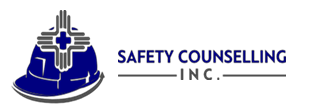OSHA’s Definitions of Recordable Injury or Illness and First Aid

Every employer should understand how OSHA defines workplace illnesses and injuries and record them. Then you will be able to implement appropriate measures and remain compliant at all times. On top of that, you can also keep your employees safe.
The definition of OSHA for injuries or illnesses.
- Any workplace related fatality
- Any work-related illness or injury that can result in days away from work, consciousness, transfer to a different job, or restricted work.
- Any work-related illness or injury that needs medical treatment than basic first aid.
- Any work-related diagnosis of chronic irreversible disease, cancer, cracked or fractured teeth or bones, as well as punctured eardrums.
- Work-related injuries that involve medical removal, sharps injuries and needlesticks, tuberculosis, and hearing loss.
The employers should also be aware of how OSHA defines first aid. Then you can remain compliant in terms of offering first aid to the employees as well.
How does OSHA define first aid
- Using non-prescription strength or non-prescription medication, or any other medication that is not recommended by a licensed healthcare professional.
- Administering tetanus immunizations. Other immunizations considered under first aid include rabies vaccine and hepatitis B vaccine.
- Cleaning, soaking, and flushing wounds that are on the surface of the skin.
- Using wound coverings like gauze pads, Band-Aids, and bandages. Using butterfly bandages also fall under the category of first aid.
- Using cold or hot therapy.
- Using non-rigid ways of support, including non-rigid back belts, wraps, and bandages.
- Using temporary immobilization devices at the time of transporting a victim who faced an accident. They include neck collars, slings, splints, and back boards. Drilling a toenail or fingernail to relieve pressure, or even draining fluids from a blister fall under first aid.
- Usage of eye patches.
- Removing foreign bodies trapped inside the body using cotton swab and irrigation.,
- Removing splinters or any other similar foreign material from the areas instead of eye, through tweezers, irrigation, cotton swabs, or other similar simple methods.
- Usage of finger guards.
- Drinking fluids to help overcome heat stress.
- Using massages such as chiropractic treatments and massage therapy.
Always make sure that you have a clear picture of first aid in mind. Then you can adhere to the OSHA guidelines and offer first aid as needed.
